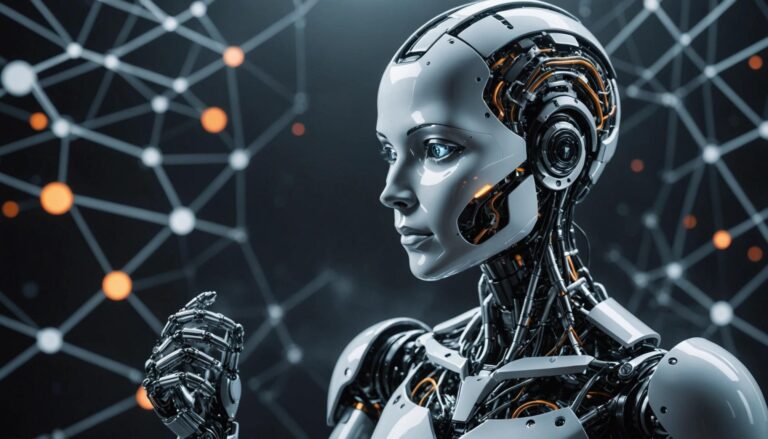
In the rapidly evolving field of artificial intelligence, achieving superior results with transfer learning adaptations has become a key focus for researchers and practitioners alike. Transfer learning, a machine learning technique where a model trained on one task is repurposed for another related task, has shown immense potential in improving the efficiency and effectiveness of AI systems. By transferring knowledge learned from one domain to another, transfer learning adaptations enable models to learn new tasks with limited data, thereby reducing training time and resource requirements. This approach holds the promise of democratizing AI by making it more accessible to a wider range of applications and industries. In this context, exploring innovative ways to enhance transfer learning techniques and maximize their impact has become crucial for pushing the boundaries of AI capabilities. This introduction sets the stage for delving deeper into the realm of transfer learning adaptations and understanding how they drive advancements in AI performance and scalability.
Exploring Transfer Learning Adaptations
Transfer learning has emerged as a powerful technique in the field of machine learning, allowing models to leverage knowledge gained from one task to improve performance on another related task. In this blog section, we delve deeper into the various aspects of transfer learning adaptations.
Types of Transfer Learning Adaptations
Transfer learning adaptations can be broadly classified into three main types: 1. Inductive Transfer: This involves transferring knowledge from a source domain to a target domain, where the input and output spaces may differ. 2. Transductive Transfer: Here, the model aims to predict the output for new, unseen instances based on the labeled data from the source domain. 3. Unsupervised Transfer: In this type, the model learns from an unlabeled source domain to improve performance on a target domain with limited labeled data.
Benefits and Impact in Model Training
The utilization of transfer learning in model training has brought about significant benefits, including: – Accelerated training process: By initializing the model with pre-trained weights, the training time can be significantly reduced. – Improved model performance: Transfer learning often leads to enhanced model accuracy and generalization on new tasks. – Reduction in computational resources: Leveraging pre-trained models can help in saving computational resources and training time. – Adaptability to new tasks: Transfer learning enables models to quickly adapt to new tasks with minimal data.
Challenges and Solutions
Despite its advantages, transfer learning also presents its own set of challenges. Some common challenges include: – Domain adaptation issues: Adapting the knowledge from the source domain to the target domain without loss of performance. – Dataset bias: Ensuring that the transfer learning process is not biased towards specific patterns in the data. – Overfitting of the model: Preventing the model from memorizing the source domain data and failing to generalize.
However, several solutions have been proposed to address these challenges, such as: – Domain adversarial training: Introducing adversarial learning techniques to align the distributions of the source and target domains. – Data augmentation techniques: Generating synthetic data to increase the diversity of the training set. – Regularization methods: Applying regularization techniques to prevent overfitting and improve model generalization.
Exploring transfer learning adaptations opens up a realm of possibilities in enhancing model training efficiency and performance while also necessitating innovative solutions to overcome associated challenges. The continuous advancements in transfer learning research are paving the way for more robust and adaptable machine learning models.
Strategies for Effective Transfer Learning Adaptations
Optimal Selection of Pre-trained Models
Transfer learning involves leveraging pre-trained models to tackle new tasks. To ensure success, it is crucial to select a pre-trained model that aligns closely with the target task. Factors to consider include the similarity of the pre-trained model’s architecture to the new task, the size and diversity of the dataset it was trained on, and the computational resources required for fine-tuning. Additionally, assessing the performance of different pre-trained models on similar tasks through metrics like accuracy, precision, recall, and F1 score can aid in choosing the most suitable one for adaptation.
Hyperparameter Tuning Techniques
Hyperparameters play a key role in the performance of a transfer learning model. Techniques such as grid search, random search, and Bayesian optimization can be employed to search the hyperparameter space efficiently. It is essential to strike a balance between exploring different hyperparameter configurations and exploiting promising regions to enhance the model’s generalization capabilities. Moreover, considering the impact of hyperparameters on model convergence, regularization, and computational efficiency is vital for achieving optimal performance.
Continuous Model Evaluation
The evaluation of a transfer learning model should be an ongoing process. Regularly monitoring the model’s performance on validation and test datasets can provide insights into its robustness and generalization ability. By setting up automated monitoring and evaluation pipelines, deviations in model performance can be detected early, allowing for timely adjustments and improvements. Furthermore, incorporating techniques like ensemble learning and domain adaptation in the evaluation process can enhance the model’s adaptability to evolving data distributions and task requirements, ensuring sustained performance over time.
Transfer Learning in Unsupervised Settings
While transfer learning is commonly applied in supervised learning scenarios, its utility extends to unsupervised settings as well. By leveraging unsupervised pre-training methods like autoencoders, generative adversarial networks (GANs), and self-supervised learning, models can learn meaningful representations from unannotated data, which can then be fine-tuned for specific tasks. Understanding the nuances of adapting pre-trained models in unsupervised contexts, including challenges related to feature extraction, domain shifts, and latent space representations, is crucial for successful transfer learning implementations in diverse data modalities.
Real-world Applications of Transfer Learning Adaptations
Transfer learning adaptations have emerged as a powerful tool with wide-ranging applications across various industries. Let’s delve deeper into the transformative potential of transfer learning by exploring two compelling real-world applications that showcase its versatility and impact.
Revolutionizing Healthcare with Transfer Learning
The Healthcare Industry Case Study.
Transfer learning has revolutionized the healthcare sector by empowering medical professionals to harness the capabilities of pre-trained models and datasets for critical tasks like disease diagnosis, medical imaging analysis, and personalized treatment recommendations. By fine-tuning existing models on specialized healthcare data, practitioners can achieve exceptional accuracy in identifying diseases, predicting patient outcomes, and optimizing treatment regimens. This approach not only enhances diagnostic precision but also significantly improves patient care and healthcare outcomes, ultimately saving lives and reducing healthcare costs.
Enhancing User Experience through Sentiment Analysis
Sentiment Analysis in Social Media.
In the realm of social media and online platforms, sentiment analysis stands as a vital tool for comprehending user sentiments, preferences, and trends. Transfer learning techniques have revolutionized sentiment analysis by empowering businesses to extract invaluable insights from vast volumes of unstructured text data. By training models on general sentiment datasets and subsequently fine-tuning them on domain-specific content, organizations can gain profound insights into customer feedback, market sentiments, and brand perception. This analytical process aids businesses in making data-driven decisions, customizing marketing strategies, and elevating overall user satisfaction levels.
Moreover, the applications of transfer learning extend beyond healthcare and social media, infiltrating domains like finance, e-commerce, and autonomous systems. From predicting financial market trends to enhancing product recommendations, transfer learning continues to drive innovation and efficiency across diverse sectors. By leveraging transfer learning adaptations, organizations can unlock new possibilities, foster creativity, and deliver enhanced value propositions to their stakeholders.
The real-world implications of transfer learning adaptations are vast and profound, reshaping industries, enhancing decision-making processes, and elevating user experiences. As technology progresses, the integration of transfer learning is poised to catalyze further advancements, creating a future where intelligent systems and human ingenuity converge to redefine the boundaries of possibility.
Expanding Horizons with Transfer Learning
Applications in Finance and E-Commerce.
The realm of finance and e-commerce has witnessed a significant transformation with the integration of transfer learning. In finance, the ability to predict market trends and analyze complex financial data has been greatly enhanced through the utilization of transfer learning algorithms. These algorithms can process vast amounts of historical data to identify patterns and make accurate predictions, aiding investors and financial institutions in making informed decisions.
Similarly, in the e-commerce sector, transfer learning has been instrumental in improving customer experiences through personalized recommendations and targeted marketing strategies. By analyzing user behavior and purchasing patterns, e-commerce platforms can leverage transfer learning to offer tailored product suggestions, optimize pricing strategies, and enhance overall customer satisfaction levels. This data-driven approach not only increases sales revenue but also cultivates long-term customer loyalty.
The Future of Transfer Learning
As transfer learning continues to evolve, its future holds immense promise across various industries. From autonomous systems in transportation to personalized healthcare solutions, the adaptability and efficiency of transfer learning algorithms are poised to drive innovation and shape the future of technology. The synergy of human expertise and machine learning capabilities facilitated by transfer learning opens up a world of possibilities, paving the way for smarter, more efficient systems that cater to diverse needs and preferences.
In essence, the real-world applications of transfer learning adaptations are multifaceted and transformative, offering a glimpse into a future where intelligent technologies seamlessly integrate with human endeavors to redefine the landscape of innovation and progress.
Conclusion
Transfer learning adaptations offer a powerful approach to achieve superior results in various machine learning tasks by leveraging knowledge gained from one domain and applying it to another. By fine-tuning pre-trained models or extracting features from different layers, transfer learning enables quicker training times, reduced data requirements, and improved performance metrics. Embracing transfer learning adaptations can lead to more efficient and effective machine learning solutions across a wide range of applications.







